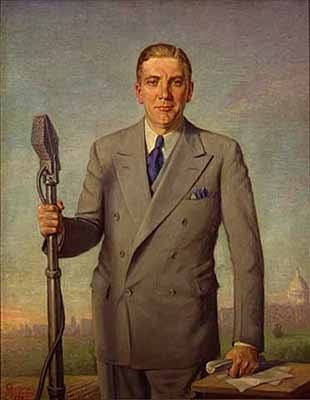“Dubious Alliance” is a detailed
(perhaps too detailed) scholarly history of the factional struggles within the
Minnesota Farmer-Labor Party (FLP) circa 1936-48. The FLP was one of the most
successful left-wing parties in U.S. history, dominating state politics in
Minnesota during the Great Depression. Three state governors were FLP-ers:
Floyd B Olson, Hjalmar Petersen and Elmer Benson. The FLP also sent senators
and house representatives to Washington DC. More importantly, the party also
controlled the state patronage system and many labor unions (this was during
the heyday of the CIO and the Teamsters).
The book details the often Byzantine intrigues between different political factions and personal cliques within the FLP, or rather its membership organization FLA. The author refers to one of these factions as “the Popular Front”, a term never actually used in real life. The term is a reference to the Communist policy of building broad (but ultimately pro-Communist and pro-Soviet) alliances with “liberals” and “progressives” of various stripes. “The Popular Front” is thus the FLP faction secretly or semi-secretly run by the Communist Party. The Communists and their fellow travelers were stunningly successful in Minnesota. Not only did they control the structures of the CIO. When the FLP merged with the Democratic Party in 1944 to form the Democratic-Farmer-Labor Party (DFL), the Popular Front managed to take it over. Note that the DFL was the state organization of the national Democratic Party! And all this time, we've been told that “Reds under the bed” or “Communists who stay-late-at-meetings” were just myths…
It's interesting to note that Elmer Benson, the former Minnesota governor, acted as the head of the Popular Front faction. I never understood why. Benson wasn't a Communist himself, and even maintained a certain independence from the Communist leadership. He seems to have been a perennial isolationist and only reluctantly supported American entry into World War II. The Communists changed their line on isolationism depending on Stalin's orders at the moment, sometimes creating friction with Benson and even some comic or awkward situations. Yet, Benson seems to have played the same role as, say, Negrín in Spain – a non-Communist locked in a perpetual alliance with the Communists, a kind of top dog fellow traveler.
The opposition to the Popular Front came from many quarters: committed anti-Communist liberals around Hubert Humphrey (the future U.S. Vice-President), electoral opportunists worried about any Communist ties, pure-and-simple trade unionists (who, however, opposed the Communists from outside the FLP), old time socialists who regarded the Communist Popular Front as too moderate, and the Trotskyists in the Teamster Union local 544. The Communists, who often worked under assumed political identities and sometimes even assumed names, were skilful factionalists but seems to have been ultimately hampered by their slavish dependence on Moscow's ever-changing diktats. The Hitler-Stalin pact and the onset of the Cold War hit them badly. So did the decision to leave the fused Democratic-Farmer-Labor Party shortly after having taken it over, in favor of Henry Wallace's much smaller Progressive Party. As for the anti-Communist opposition, most of it either coalesced around Humphrey's faction or effectively disappeared, making the 1948 elections (and factional struggles) a more obvious two-way race between Communists and anti-Communist liberals.
As already indicated, “Dubious Alliance” is extremely detailed and can therefore be somewhat tedious to read, but it does contain interesting information of a political and personal nature. The author is an anti-Communist liberal, and seems to like Hubert Humphrey. One annoying trait of the author is his weirdly psychological turns of phrase, which sometimes sound comical. Thus, we learn that a certain union leader was “deeply offended” by criticism of craft unionism. Indeed, it seems everyone in this story is “deeply offended”, “profoundly shaken” or “shocked” by something. But sure, maybe Scandinavian-Americans and Finnish-Americans are overly-emotional? Otherwise, I was mostly struck by how profoundly *different* Minnesota during the 1930's and 1940's was from the present political situation. It was a state dominated by closed shops, powerful Communist-controlled (or even Trotskyist-controlled) unions and unusual ethnic groups such as Finns or Danes, while the state politics were to some extent influenced by decisions taken by Joe Stalin in Moscow…
Those were the days.

No comments:
Post a Comment